How to transport cats on the train?
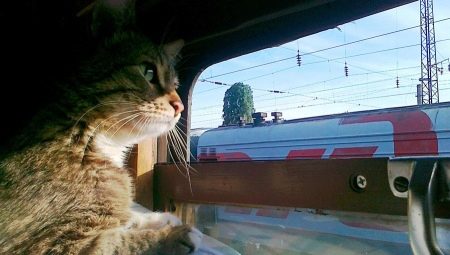
Pets often live in an apartment or house and only sometimes go outside their native territory. From time to time, the owners need to go somewhere by train or even move to a new place of residence, and then it is necessary to decide what to do with the pet. If you need to travel on a train with a cat, then you should know how to do it correctly and what is needed to complete such a procedure.
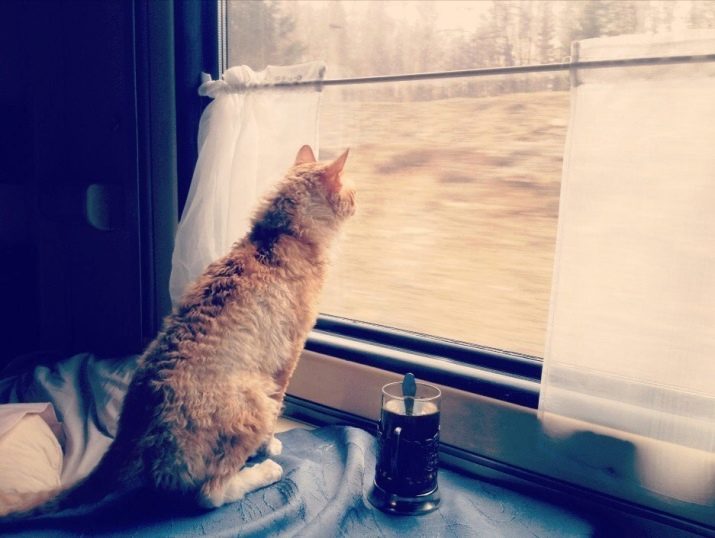
Carriage rules
Many people like to travel, but in the case of pets, this procedure can become problematic, because certain rules must be followed to transport cats and other animals. It is easier to transport a cat on a train than a dog, which is due to its size, however, even for such a fluffy animal, you need to draw up a lot of documents so that the owner is allowed to transport the pet. In order to be in time for everything, it is recommended to go through all the authorities at least a month in advance and obtain the relevant documents in order to calmly prepare for the trip.
In order for the cat to be allowed on the train, it is necessary to vaccinate him and examine him at all doctors. Below is what else needs to be done.
- Rabies vaccine - without her, no one will give permission for the presence of a cat on the train. The optimal period for its implementation is considered to be 30 days before the trip, so that the results are relevant and accurate.
- Cleansing the cat's body from parasites - it is recommended to carry out it 1–2 weeks before the planned vaccination.
- Double vaccination - the procedure necessary if the animals have not been vaccinated for several years in a row. Vaccinations are given 20 days apart.
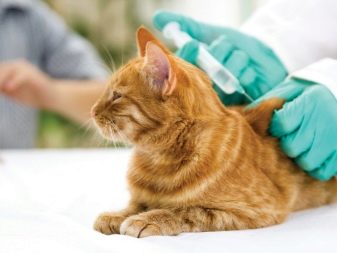

In addition to the mandatory measures, you must have a veterinary passport with you, in which the doctor notes each vaccination, writes the vaccine number, date of the vaccine, puts his signature and seal. Without such documentation, it makes no sense to even try to bring your pet with you. In addition, a veterinary certificate is very important, which is given in a state veterinary clinic by a doctor who examines a cat no later than three days before the trip. Such a certificate indicates:
- type of pet;
- the number of animals that will be transported, because one document can be issued for several pets at once;
- the age of the cat;
- records of vaccinations and quarantines carried out.
Veterinary certificate in form No. 1 has a three-day relevance, therefore it makes no sense to receive it in advance.


Since the collection of all documents takes a lot of time, effort and money, in 2017 Russia changed the rules for transporting animals to Russian Railways, significantly simplifying it. Now the cat needs to buy an additional ticket, because the pet is considered as carry-on luggage. This rule works if the weight of the animal does not exceed 20 kg. You must have a veterinary certificate with you, which is still valid for 3 days, which is shown when buying a ticket and boarding the car.
You can leave your pet with you only in hard wagons - no one will let you into the SV-wagon or superior comfort wagon with pets. An adult cat or kitten must be kept in a secure cage with a lock throughout the trip. If any of the rules are not followed, then the passenger may have serious problems, right up to disembarking from the train.


What do you need to take with you?
Any trip should be carefully planned, especially if it is to be carried out in a couple with your beloved cat. In order not to have problems when buying a ticket and the road itself, you should take care of all the nuances in advance. In addition to the basic documents (veterinary certificate and vaccinations), you need to inquire about what is needed to take your pet abroad. In this case, an international veterinary certificate is also required, for the European Union it must be an EU certificate.
In some cases, the owner is required to microchip the cat before the trip, which can be done in private or city veterinary clinics. If you plan to travel to the United States, then you should know that at the station you will need to fill out a declaration on the import of your pet into the country. In order not to face unexpected obstacles, it is worthwhile to study the regulatory framework regarding the import of animals into the country where the trip is planned.
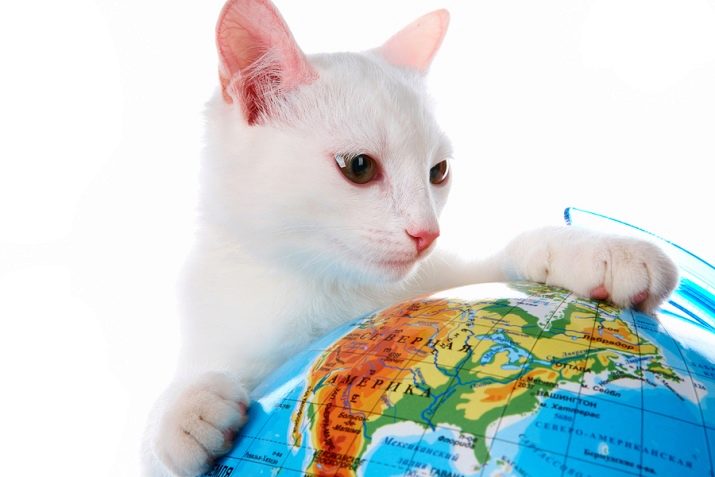
When the preparation of the documents is completed, it is worth thinking about what exactly you need to take with you on the road so that the pet is comfortable along the entire route. The most important things will be food and water. If the cat has not traveled far before, then it is unlikely that there is a suitable container for it, and without it, the train will not be allowed. Such a container must be strong, well-ventilated, with a secure lock.
The total weight of the cat and the box must be less than 20 kg, otherwise it will have to be sent to the baggage car. The dimensions of the container must also be correct, it is optimal if they correspond to the readings of 50x70x60 or the like, the main thing is that the total number does not exceed 180 cm.
Since the road is long, it is worth considering all situations and taking with you a first-aid kit for the cat, which should contain antiemetic drugs, antidiarrheals, pain relievers, adsorbents, antiseptics, bandage and cotton wool. If the owner travels with his pet without companions, then you can take with you a tray with contents for the pet to go to the toilet. If this is not possible or the cat refuses to relieve itself in unnatural conditions, you need to cover the bottom of the container with a moisture-absorbing disposable diaper.
You should have a pack of wet wipes with you if you need to clean up after your pet.

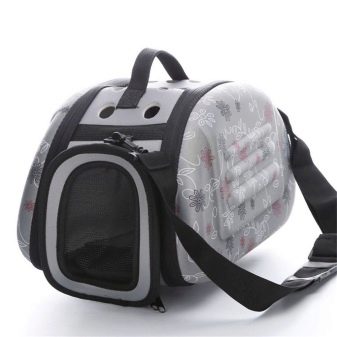
To carry out feedings, you need to have two bowls with you - for food and water - or one paired. So that the animal is not bored alone in the cage, and he is not afraid, you can put your favorite toy in the container. It is better if it is small and quiet. When traveling, you need to have collar and harness, to be able to walk your pet during long stops. If this rule is neglected, then a frightened cat, due to an unfamiliar situation and in new conditions for itself, can get nervous and run away.
For a comfortable journey, it is better to take a warm bedding for the cage with you, especially if the cat is to be transported in winter so that the pet is comfortable and warm. The food and water for the cat must be fresh and clean, so you should buy non-carbonated water in small bottles, and the food should only be dry - any other food can deteriorate from improper storage conditions during a long trip. On the first train ride, you can give the cat a sedative so that he can more calmly perceive everything that is happening around.
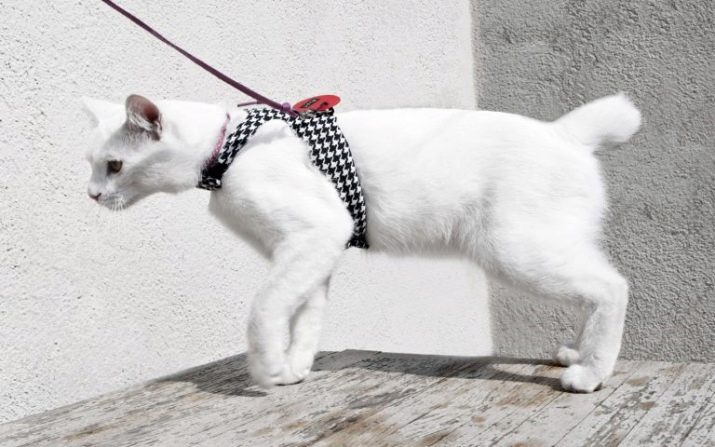
Preparation
In the event that the owner decided to go on a long trip with the pet, he will tenderly take care of many things. The most important accessory in which the cat will spend the entire journey is the carrier, and the pet's comfort and calm demeanor will depend on its correct choice. There are such types of carriers.
- Small animal transport bag - it does not have a rigid base and supports, so the cat will be uncomfortable in it for a long time, as there will be a desire to find some kind of support. The fabric walls do not allow air to pass through well, which is why, after a while, the pet will begin to suffocate in such a bag. This option is convenient for small trips, but not suitable for a long journey.
- Frame bag - almost the same as the previous one, with the difference that the bottom has a rigid base and the upper part is attached to the stiffening ribs, so that the product can maintain a certain shape. The problem area in this case remains the access of fresh air to the interior of the product.
- Plastic box - the most convenient option for transporting pets, especially over long distances. The product has a hard bottom and side walls, in which there are numerous holes that allow air to circulate freely, and the pet can follow everything that is happening around, which will help him to calm down. The only relative disadvantage is the impressive size of such containers, which are not always convenient to transport on the train.
- Metal box - suitable for very active or aggressive animals, since the metal frame will not give the fluffy animal a chance to get out. Among the shortcomings, it is worth mentioning the large weight, the susceptibility of the material to corrosion, unaesthetic, since the box will resemble a cage.


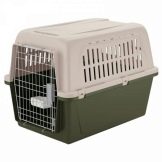

When everything you need is collected, you need to prepare the traveler himself for the upcoming journey. This process looks like this:
- the last feeding should be carried out at least an hour and a half before leaving the apartment for the train;
- if the trip will be the first, or the pet has a hard time transporting it, then 1-2 hours before the exit, it is worth giving the cat a sedative;
- before leaving the apartment, check all the documents for the animal and things that he needs on the road;
- Get on the train in time to get there safely, without exposing the cat to premature stress and shaking;
- the emotional state of the owner must be completely calm so that the pet is also balanced.
If the cat is traveling for the first time, and even a long distance, it is best to give him a sedative. The most popular and effective drugs: Fitx, Stop-Stress, Fospasim, Vetrankvil. Each medicine has its own characteristics and contraindications, in addition, there may be certain side effects from them.
In order not to get an unpleasant surprise on the trip, it is advisable to give the chosen remedy a try in advance, or better, several times, in order to know exactly what kind of action should be expected from it.


In which carriage can a cat be transported?
To carry a pet on the train, you must not only have all the necessary documentation and a box for your pet with you, but also adhere to the rules for transporting animals in various types of vehicles. If the trip will be carried out on the Sapsan train, then there will be separate seats for cats, which are located in the third and eighth carriages, where economy class passengers travel. For business and first class, you can travel with a cat in the third carriage. It should be borne in mind that the weight of the box and the cat should not be more than 10 kg, and the dimensions should be within 120 cm. If the trip is carried out on the Strizh train, then you can travel with the cat in class 2B wagons. One person can hold no more than two pets, the total dimensions of which are no more than 180 cm.
If we are talking about the Lastochka train, then you can travel with your pet in carriages 2 and 3C. Specialized seats are provided for such passengers in cars 5 and 10. If the traveler wants to travel in more comfortable conditions, you can take a suite and pay extra for keeping a cat in it. If the train is "Swallow Premium", then there are much more places for traveling with animals in the fifth carriage, in addition, you can purchase a ticket for a luxury carriage if you travel with your pet together.
If you need to go by train "Allegro", then there are places for transportation of cats in the sixth carriage. In this case, it is impossible to agree on the transport of a pet in superior rooms. Pets must be in specialized containers with dimensions of 60x45x60 and no more. When buying a ticket, it is very important to specify several times that the trip will be carried out with the pet. Ticket ordering can be carried out both online, on sites where there are also corresponding columns providing additional services, or purchase at a stationary ticket office at the station.
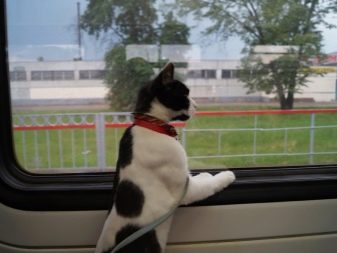
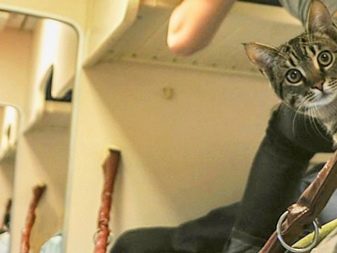
As for the payment for transporting a cat, its location, this situation is different in different cars.
- In a shared carriage, where passengers travel in a sitting position, an additional fee will have to be paid for the pet. The conductor must check the documents and the ticket for the animal.
- Carriages 1 and 2B, 2 and 3ZH - the cat can be carried in them at no additional charge.
- In a reserved seat carriage with 3D and 3U lying places, you will need to pay for a pet.
- In a four-seater compartment carriage, where there are places for lying 2K, 2U, 2L, 2H, transportation of a cat will also be paid, and in this case it is necessary to provide all the documentation for the animal.
- In a two-seater compartment SV, 1B and 1E, you can carry your pet free of charge.
- In a two-seater luxury compartment, where there are places for lying and a shower 1A, 1I, 1M, you can also travel with a cat at no extra charge.
To make the trip calm and comfortable for both the owner and the pet, it is important to clarify in which carriage the cat can be accommodated. It is better to find out at the ticket office, on the Internet and directly with the conductors, in which car of a particular train you can ride with the fluffy beast. Such a check is done in advance so that there is a firm confidence in where exactly to book seats. It is also worth buying the tickets themselves in advance, so as not to worry about the availability of the necessary seats.
If you properly prepare for the trip, then even a long train journey with a cat will be easy and enjoyable.

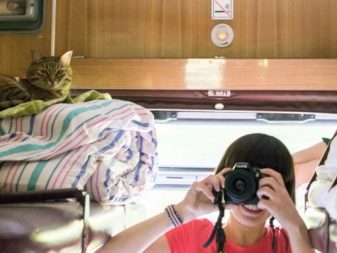
Useful tips for traveling with a cat by rail are presented in the video below.
































